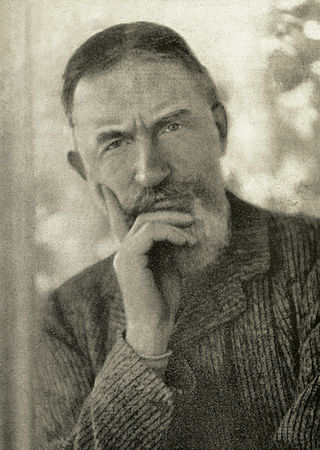
George Bernard Shaw, known at his insistence as Bernard Shaw, was an Irish playwright, critic, polemicist and political activist. His influence on Western theatre, culture and politics extended from the 1880s to his death and beyond. He wrote more than sixty plays, including major works such as Man and Superman (1902), Pygmalion (1913) and Saint Joan (1923). With a range incorporating both contemporary satire and historical allegory, Shaw became the leading dramatist of his generation, and in 1925 was awarded the Nobel Prize in Literature.

The Betrothed is an Italian historical novel by Alessandro Manzoni, first published in 1827, in three volumes, and significantly revised and rewritten until the definitive version published between 1840 and 1842. It has been called the most famous and widely read novel in the Italian language.
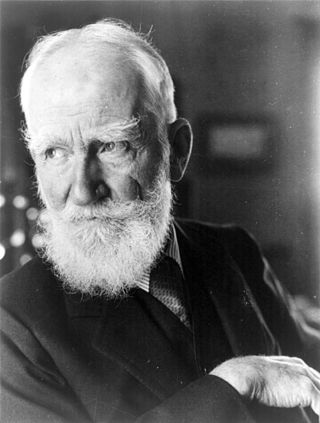
Back to Methuselah (A Metabiological Pentateuch) by George Bernard Shaw consists of a preface (The Infidel Half Century) and a series of five plays: In the Beginning: B.C. 4004 (In the Garden of Eden), The Gospel of the Brothers Barnabas: Present Day, The Thing Happens: A.D. 2170, Tragedy of an Elderly Gentleman: A.D. 3000, and As Far as Thought Can Reach: A.D. 31,920.
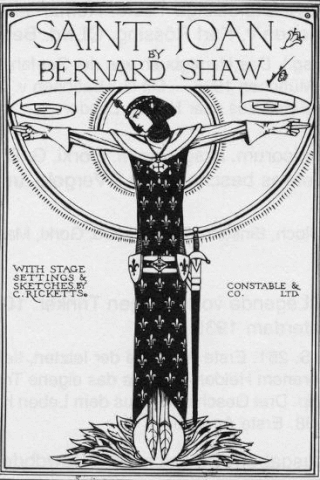
Saint Joan is a play by George Bernard Shaw about 15th-century French military figure Joan of Arc. Premiering in 1923, three years after her canonization by the Roman Catholic Church, the play reflects Shaw's belief that the people involved in Joan's trial acted according to what they thought was right. He wrote in his preface to the play:
There are no villains in the piece. Crime, like disease, is not interesting: it is something to be done away with by general consent, and that is all [there is] about it. It is what men do at their best, with good intentions, and what normal men and women find that they must and will do in spite of their intentions, that really concern us.
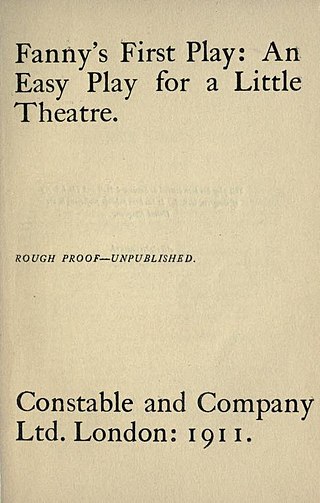
Fanny's First Play is a 1911 play by George Bernard Shaw. It was first performed as an anonymous piece, the authorship of which was to be kept secret. However, critics soon recognised it as the work of Shaw. It opened at the Little Theatre in the Adelphi in London on 19 April 1911 and ran for 622 performances. The mystery over the authorship helped to publicise it. It had the longest run of any of Shaw's plays. A second production opened on Broadway on September 16, 1912 for 256 performances. The play toured the provinces in England in the same year.
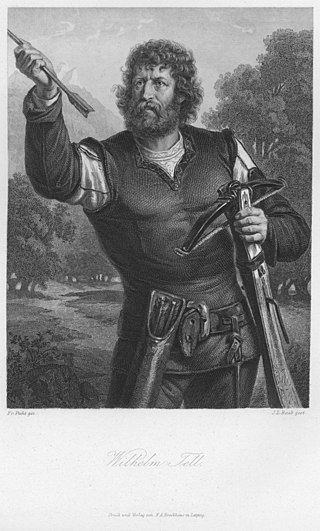
William Tell is a drama written by Friedrich Schiller in 1804. The story focuses on the legendary Swiss marksman William Tell as part of the greater Swiss struggle for independence from the Habsburg Empire in the early 14th century. Gioachino Rossini's four-act opera Guillaume Tell was written to a French adaptation of Schiller's play.
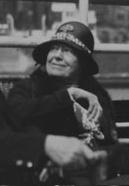
Charlotte Frances Payne-Townshend was an Irish political activist in Britain. She was a member of the Fabian Society and was dedicated to the struggle for women's rights. She married the playwright George Bernard Shaw.
William Shakespeare's play Romeo and Juliet, set in Verona, Italy, features the eponymous protagonists Romeo Montague and Juliet Capulet. The cast of characters also includes members of their respective families and households; Prince Escalus, the city's ruler, and his kinsman, Count Paris; and various unaffiliated characters such as Friar Laurence and the Chorus. In addition, the play contains two ghost characters and an unseen character (Rosaline).
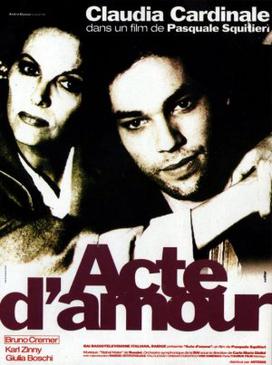
Atto di dolore is an Italian film released in 1990. It stars Claudia Cardinale.
"The Confession" is the final episode of the second season of Showtime-Bravo! historical drama The Borgias. It was written by Guy Burt and directed by David Leland. It originally aired on June 17, 2012.

Village Wooing, A Comedietta for Two Voices is a play by George Bernard Shaw, written in 1933 and first performed in 1934. It has only two characters, hence the subtitle "a comedietta for two voices". The first scene takes place aboard a liner, the second in a village shop. The characters are known only as "A" and "Z".

The Shewing-Up of Blanco Posnet: A Sermon in Crude Melodrama is a one-act play by George Bernard Shaw, first produced in 1909. Shaw describes the play as a religious tract in dramatic form.

Passion, Poison, and Petrifaction is a short play by Bernard Shaw, subtitled The Fatal Gazogene: a Brief Tragedy for Barns and Booths. It is a comic mock-melodrama, written to raise funds for charity. It has been revived occasionally, in tandem with other short works by Shaw or by other playwrights.
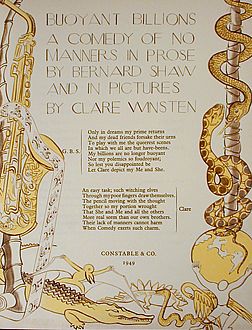
Buoyant Billions (1948) is a play by George Bernard Shaw. Written at the age of 92, it was his last full-length play. Subtitled "a comedy of no manners", the play is about a brash young man courting the daughter of an elderly billionaire, who is pondering how to dispose of his wealth after his death, a subject that was preoccupying Shaw himself at the time.

Why She Would Not: A Little Comedy (1950) is the last play written by George Bernard Shaw, comprising five short scenes. The play may or may not have been completed at his death. It was published six years later.

O'Flaherty V.C., A Recruiting Pamphlet (1915) is a comic one-act play written during World War I by George Bernard Shaw. The plot is about an Irish soldier in the British army returning home after winning the Victoria Cross. The play was written at a time when the British government was promoting recruitment in Ireland, while many Irish republicans expressed opposition to fighting in the war.

Overruled (1912) is a comic one-act play written by George Bernard Shaw. In Shaw's words, it is about "how polygamy occurs among quite ordinary people innocent of all unconventional views concerning it." The play concerns two couples who desire to switch partners, but are prevented from doing so by various considerations and end up negotiating an ambiguous set of relationships.

The Fascinating Foundling (1909) is a short comic play by George Bernard Shaw. Shaw classified it as one of his "tomfooleries". He was so unimpressed with his own work that the published text was humorously subtitled "a Disgrace to the Author".

The Gadfly or The Son of the Cardinal (1897-8) is a dramatic adaptation by George Bernard Shaw of Anglo-Irish writer Ethel Lilian Voynich 's novel The Gadfly. It was written as a favour to the author, who was a friend of Shaw's.

The Young Idea, subtitled "A comedy of youth in three acts", is an early play by Noël Coward, written in 1921 and first produced the following year. After a pre-London provincial tour it ran at the Savoy Theatre for 60 performances from 1 February 1923.












